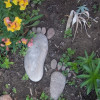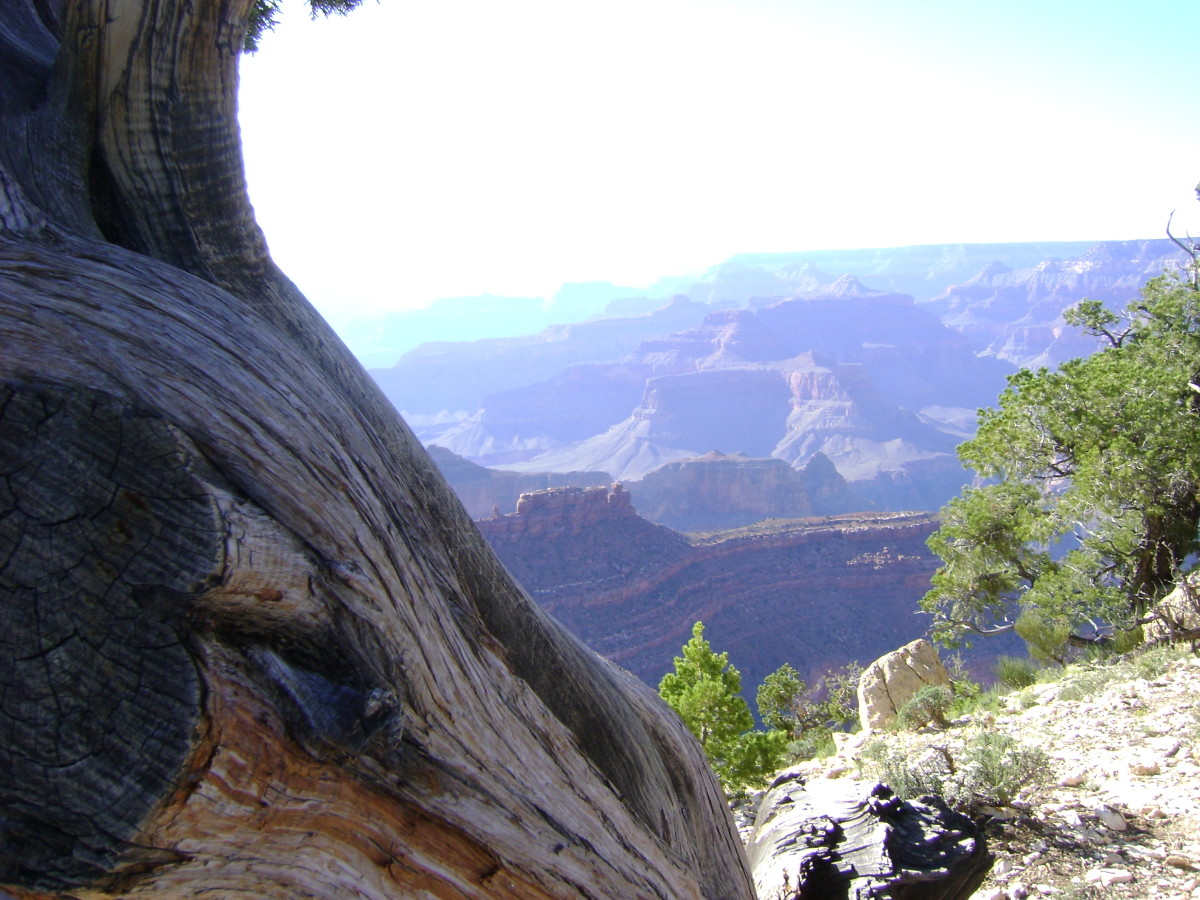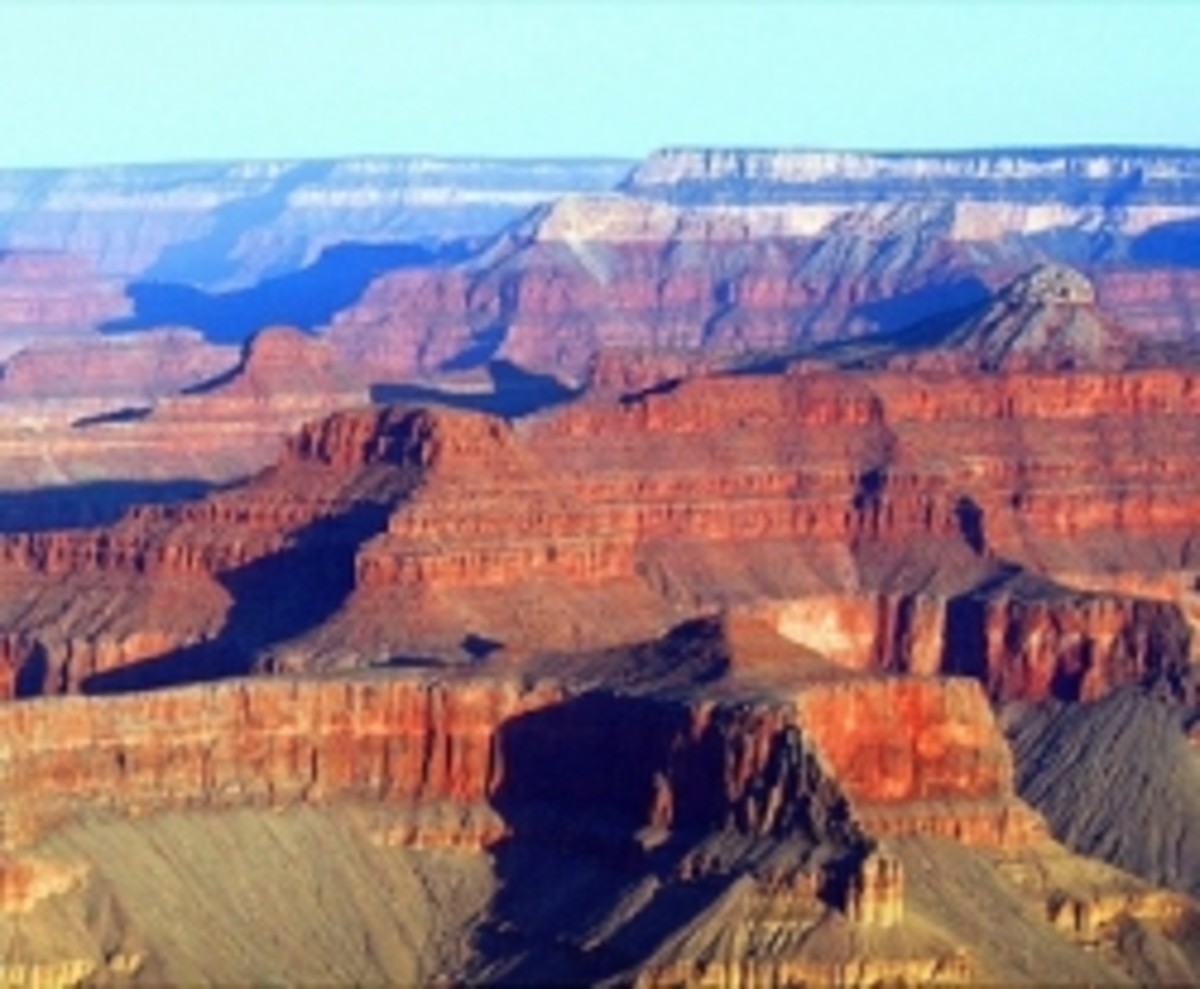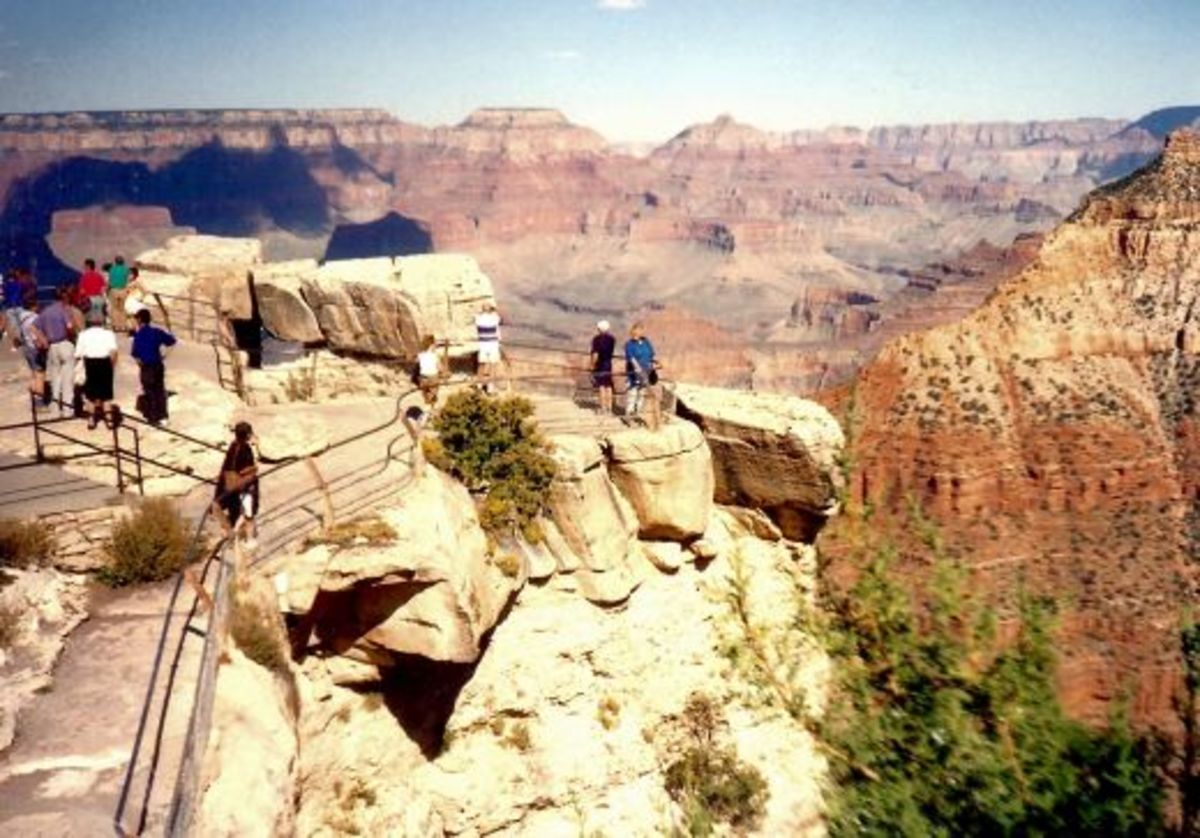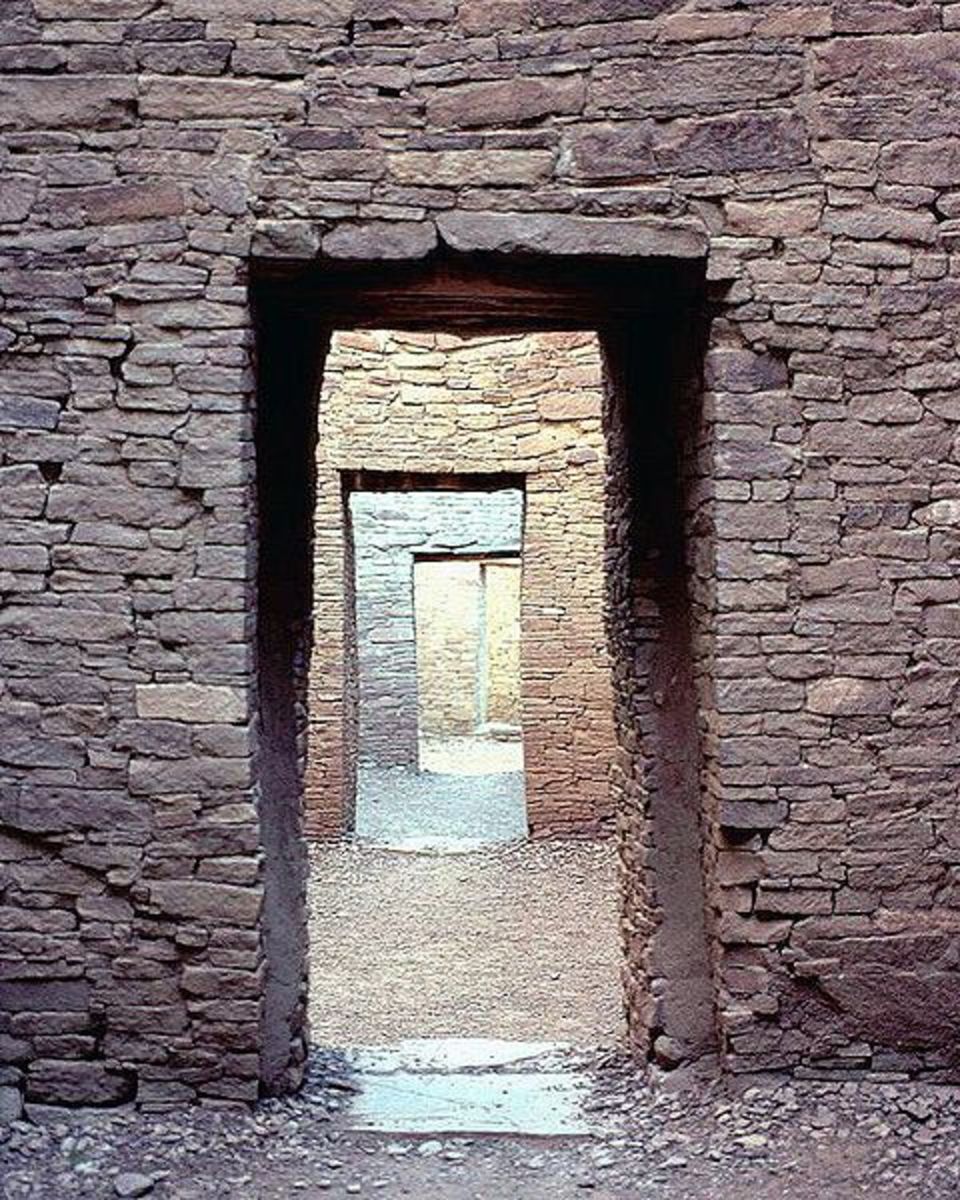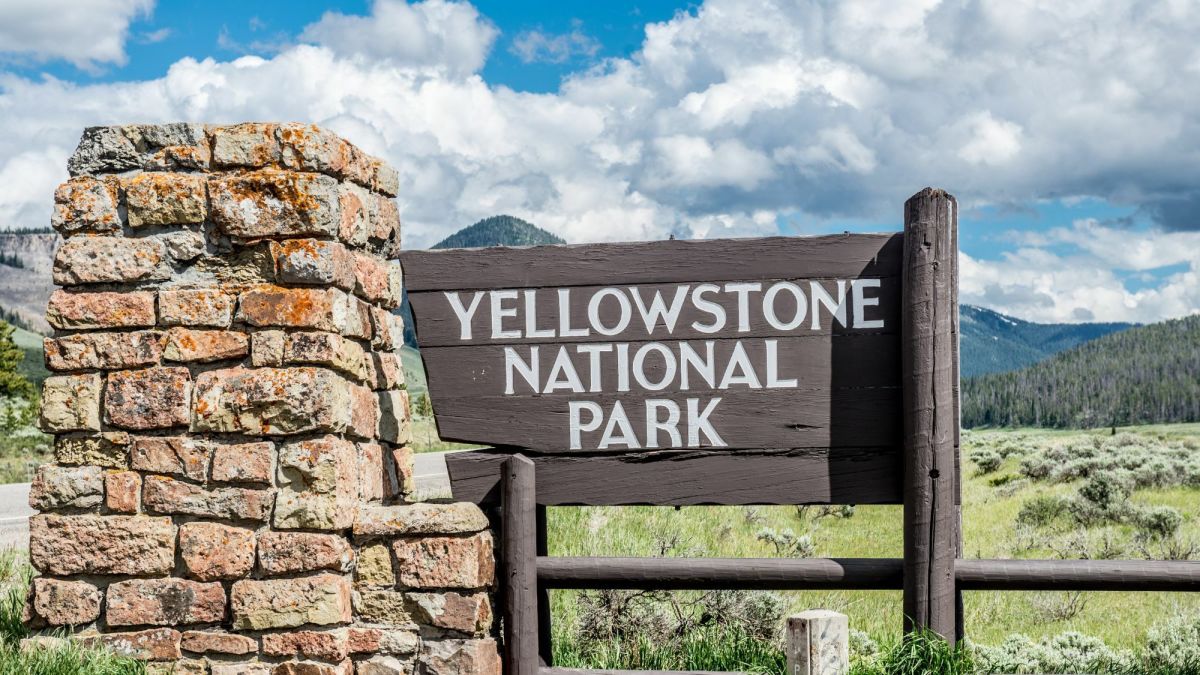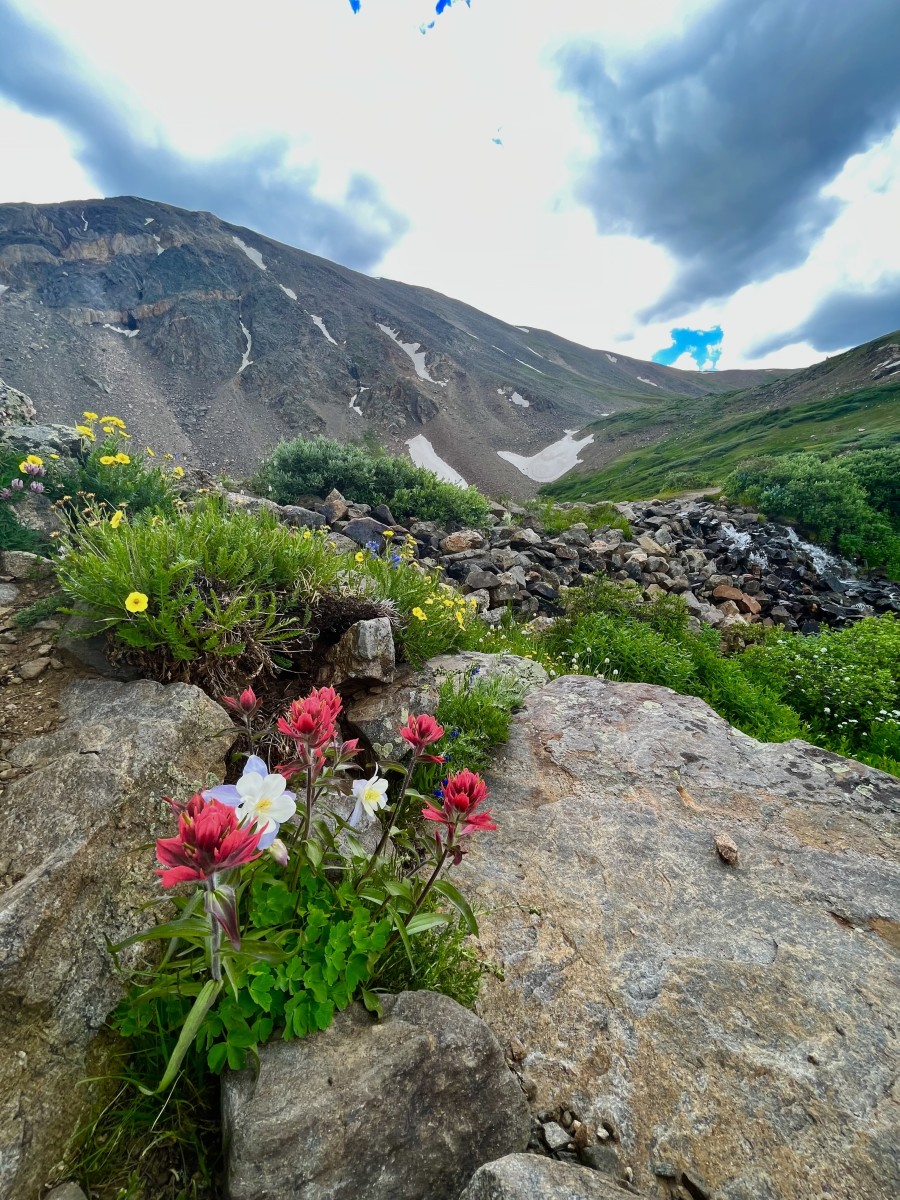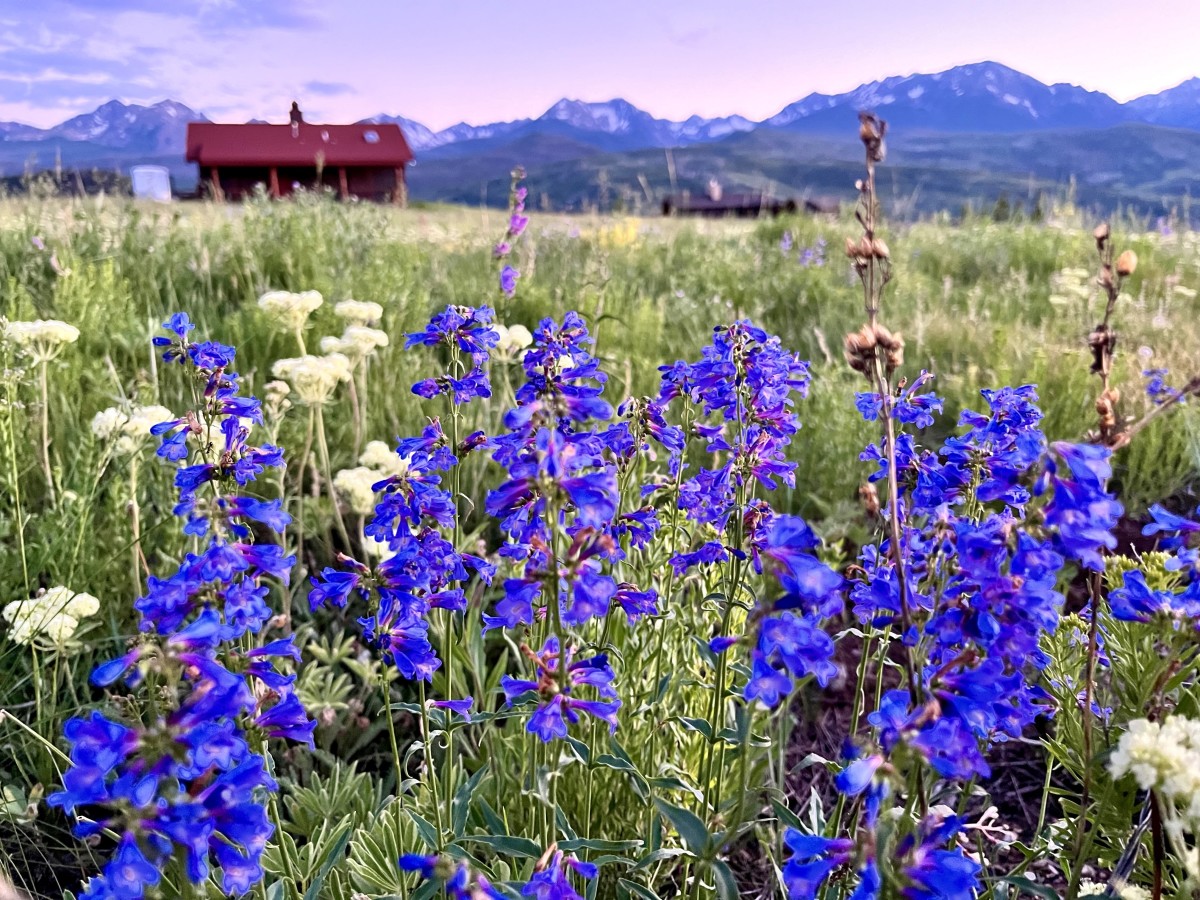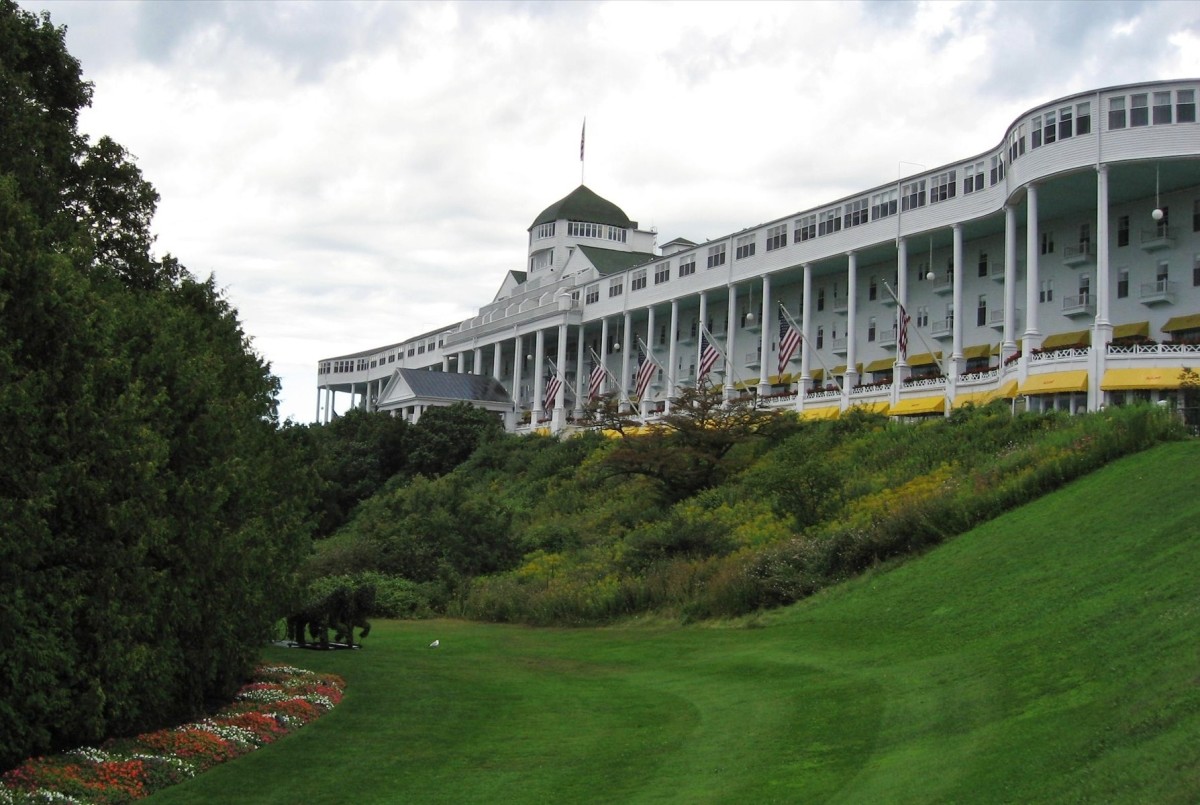The Tusayan Ruins at The Grand Canyon
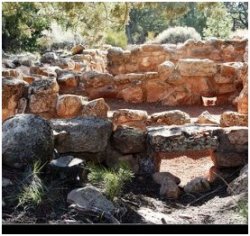
The Tusayan Ruins in the Grand Canyon
The Tusayan Ruins in the Grand Canyon are what remains of a small village of about 30 people that lived there for 25 or 30 years in the late 1100's.
The architecture was typical for that period of time.
Pueblo architecture varied according to the availability of materials they used for building.
At these ruins, they used limestone blocks held together by mud.
They really had no trees of any size nearby to build with. In the hot sun of the Arizona desert I can imagine that a home built of rock and clay mud was so much cooler than any stick built house would be.
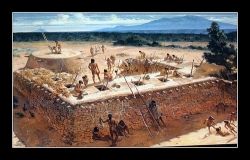
Photo of An artist vision of what the Tusayan ruins once looked like
An artist vision of what the Tusayan ruins once looked like.
This is an artist (Roy H. Andersen) vision of what the Tusayan ruins once looked like. We had actually looked at the ruins before looking at this drawing, and I had been wondering as I wandered through the Ruins, how they entered their living quarters? I noticed that there was a lack of visible door openings and I could not figure out just how they entered the buildings. I found out that they actually entered through the roof.
The Living quarters at the Tusayan Ruins
The Living quarters at the Tusayan Ruins © by Photographer Linda Hoxie
Each of the rooms, if used as bedrooms were really quite large in size, depending on the amount of people in that family that shared the living quarters.
I love wandering through the old ruins, you can just imagine building your own Pueblo out of clay and rock. How hard it would be to keep it all clean, I imagine these people were red from the dirt all the time.
Tusayan Ruins © by Photographer Linda Hoxie
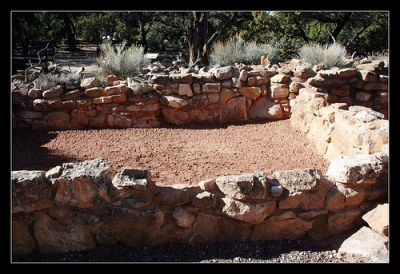
More of the Tusayan Ruins © by Photographer Linda Hoxie
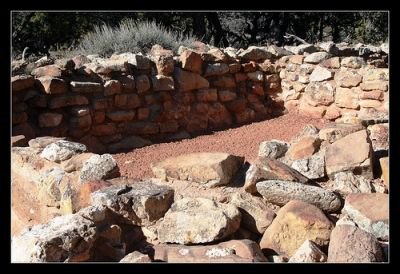
Information about the name of Tusayan ruins
The name "Tusayan" was the Spanish name for this geographic area and was given to these ruins by archeologists who excavated the site in 1930.
The name Tusayan

The Tusayan Ruins
The Tusayan Ruins © by Photographer Linda Hoxie
Here you can see the small square holes in the bottom of the living quarters, I wondered what they used them for. We joked that these were very small people, or that they had "doggy doors". But in reality they had a very important purpose for the families who lived here, they were air vents to bring in fresh air from the outside.
I imagine their fire smoke would go out the top of the Pueblo and the air would come in the bottom.
The Small Square Holes in the Bottom of the Livng Quarters
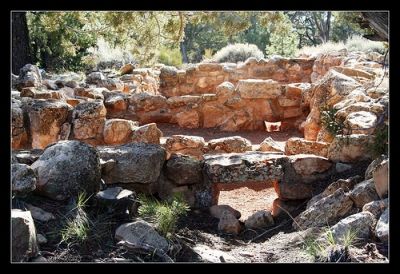
Living quarters at the Tusayan ruins
These living quarters were even more worn from time, remember they are over 800 years old. It is amazing that even part of the walls still stand today.
The Living Quarters
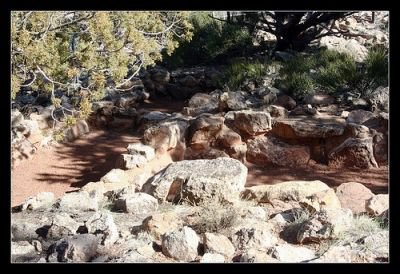
A view of how the Tusayan Ruins were situated at the site
This drawing shows just how the Tusayan ruins were built, and the layout of the different parts of their community. You can see the larger areas were living quarters. The round circles were kiva's, or gathering areas for the group. The smaller rectangles were believed to be used for storage. The center area was almost enclosed by buildings, almost like a modern courtyard you see today in some communities.
A view of how the Tusayan Ruins were situated
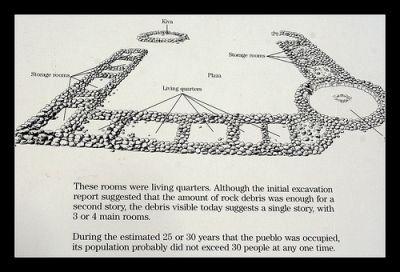
Living quarters at the Tusayan ruins by Photographer Linda Hoxie
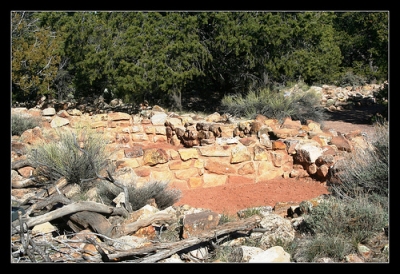
Storage Rooms

Photo of The Storage Rooms
The Storage Rooms © by Photographer Linda Hoxie
These storage rooms were a lot smaller, maybe six by five feet or so. What kinds of things do you think they stored? Grains, and dried meats, perhaps skins?
Tusayan storage rooms
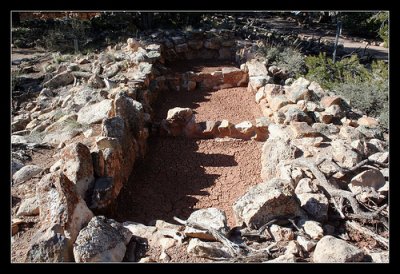
Information on the Large Kiva
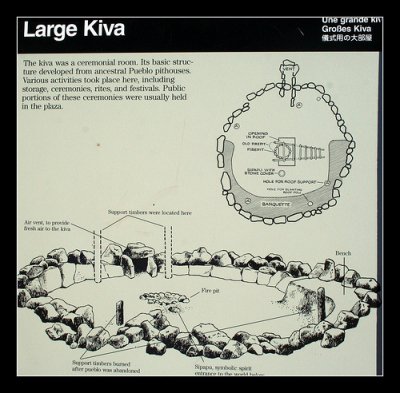
Photo of the large Kiva at the Tusayan Ruins
Photo of the large Kiva © by Photographer Linda Hoxie
This large kiva was just so surreal, 800 years old and you could almost hear them talking, chanting, singing in this gathering place. It had a very spiritual feeling to it. The fireplace still intact, the bench where they sat side by side. What did they say, what language was spoken, what did they think and feel?
I can only imagine these people as being one with nature, artistic and wise.
I wonder if they felt blessed to live so close to the Grand Canyon.
Photo of a large Tusayan Kiva
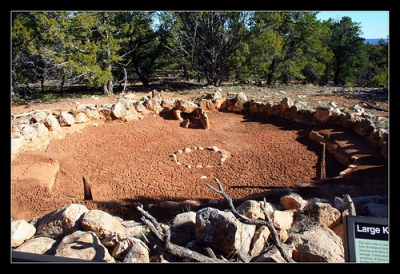
Information on the protection of the archeological sites in the Grand Canyon

Thank you for taking the time to stop by, I really appreciate you! Please drop a note below so that I know you were here.
Thank you,
Linda
